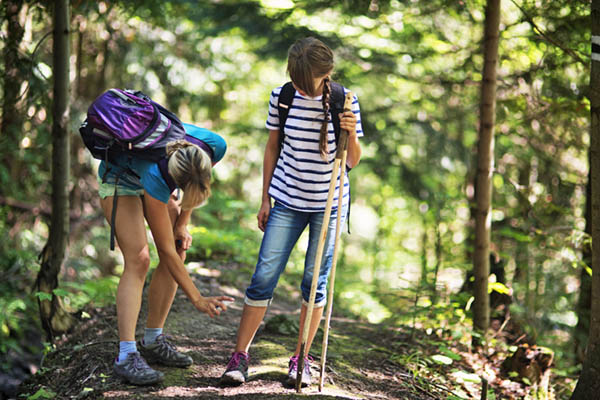Insects, including mosquitoes, ticks, fleas and flies, can spread diseases such as malaria, yellow fever, Zika, dengue fever, chikungunya and Lyme. Although some cases are mild, these illnesses can be serious and have lasting consequences. Some diseases caused by insect bites can be prevented with vaccines or medication, such as yellow fever and malaria; however, many cannot, such as Zika and Lyme. Learn more about steps you can take to avoid insect bites.
Check your destination
Your destination and your activities can determine the measures you need to take to protect yourself from insect bites. Check the CDC Destinations pages to see what vaccines or medications you might need and what illnesses or health risks are of concern at your destination.
Your Activities May Increase Your Risk of Insect Bites
Some activities put you at greater risk than others for insect bites. Activities that can increase your chances of getting insect bites include hiking, camping, working with animals, and visiting farms and wooded areas.
Common insects and diseases they spread
Take steps to avoid insect bites during your trip
Use an EPA-registered insect repellent
- Use insect repellents registered with the Environmental Protection Agency (EPA) that contain one of the active ingredients below. When used as directed, EPA-registered insect repellents have been shown to be safe and effective, even for pregnant and breastfeeding women. If you also use sunscreen, always apply insect repellent after sunscreen.
- DEET
- Picaridin (known as KBR 3023 and icaridin outside the US)
- IR3535
- Lemon Eucalyptus Oil (OLE)
- Para-menthane-diol (PMD)
- 2-undecanone
Find the right insect repellent for you using the EPA’s search tool.

- Insect repellent tips for babies and children
- Dress your child in clothes that cover the arms and legs.
- Cover strollers and baby carriers with mosquito netting.
- When using insect repellent on your child:
- Always follow label directions.
- Do not use products containing oil of lemon eucalyptus (OLE) or para-menthane-diol (PMD) on children under 3 years of age.
- Do not apply insect repellent to a child’s hands, eyes, mouth, cuts or irritated skin.
- Adults: Spray insect repellent on your hands, then apply it to a child’s face.
- If you also use sunscreen, always apply insect repellent after sunscreen.
Wear long-sleeved shirts and long pants
Treating Clothing and Equipment with Permethrin

- Use 0.5% permethrin to treat clothing and equipment (such as boots, pants, socks, and tents) or buy permethrin-treated clothing and equipment.
- Permethrin is an insecticide that kills or repels mosquitoes.
- Clothing treated with permethrin provides protection after multiple washes.
- Read the product information to find out how long the protection will last.
- If you process the items yourself, follow the product instructions.
- Do not use permethrin products directly on the skin.
- Watch the CDC’s How to Use Permethrin video.
Keep mosquitoes out of your hotel room or accommodation
- Choose a hotel or accommodation with air conditioning or screens on windows and doors.
- Use a mosquito net if you cannot stay in an air-conditioned place or with screens on windows and doors or if you sleep outside.
Sleep under a mosquito net

- Sleep under a mosquito net if you are outdoors or when screened rooms are not available. Mosquitoes can live indoors and bite day or night.
- Purchase a mosquito net at your local outdoor store or online before traveling abroad.
- Choose a compact, white, rectangular mosquito net with 156 holes per square inch and long enough to slip under the mattress.
- Nets impregnated with permethrin offer better protection than non-treated nets.
- Permethrin is an insecticide that kills mosquitoes and other insects.
- To determine if you can wash a treated net, follow the instructions on the label.
If you are bitten by mosquitoes, avoid scratching the bites and apply an over-the-counter anti-itch cream or antihistamine to relieve the itch. See Symptoms and Treatment of Mosquito Bites.
Additional Steps You Can Take to Prevent or Detect Tick Bites Early
Prevent tick bites
- Know where to expect ticks. Ticks live in grassy, brushy, or wooded areas, or even on animals. Spending time outside walking your dog, camping, gardening, or hunting could put you in close contact with ticks. Many people catch ticks in their own yard or neighborhood.
- Treat clothing and equipment with products containing 0.5% permethrin. Permethrin can be used to treat boots, clothing, and camping gear and remains protective after multiple washes. Alternatively, you can purchase permethrin-treated clothing and equipment.
- Use insect repellents registered with the Environmental Protection Agency (EPA) containing DEET, picaridin, IR3535, oil of lemon eucalyptus (OLE), para-menthane-diol (PMD) or 2-undecanone. The EPA’s helpful search tool can help you find the product that best meets your needs. Always follow product instructions. Do not use products containing OLE or PMD on children under 3 years of age.
- Avoid contact with ticks
- Avoid wooded and brushy areas with tall grass and leaf litter.
- Walk in the center of the trails.
Find and remove ticks
- Check your clothes for ticks. Ticks can be carried into the house on clothing. Any ticks found should be removed. Dry clothes in a dryer on high heat for 10 minutes to kill ticks on dry clothes after you come indoors. If clothes are damp, additional time may be required. If clothes need to be washed first, hot water is recommended. Cold, medium-temperature water does not kill ticks.
- Examine equipment and pets. Ticks can enter the home on clothes and pets and then attach themselves to a person later, so examine pets, coats and backpacks carefully.
- Shower soon after being outside. Showering within two hours of going indoors has been shown to reduce the risk of contracting tick-borne diseases. Showering can help wash off unattached ticks and is a good opportunity to do a tick check.

